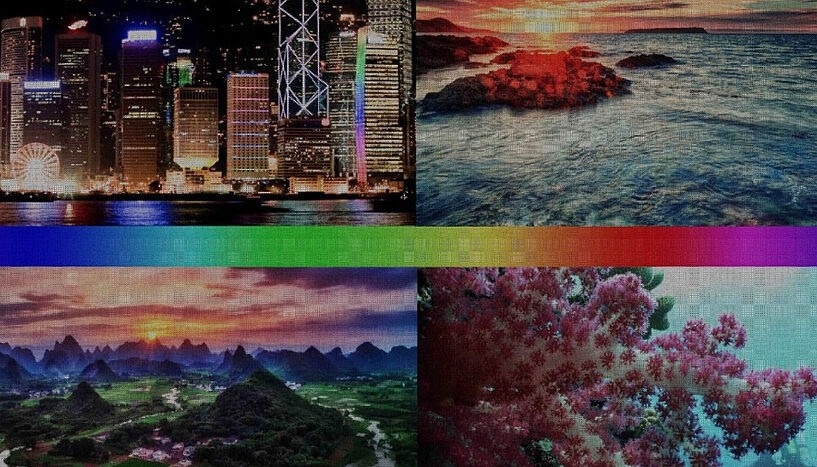The DNA double helix is formed by two DNA strands with complementary sequences. In a laboratory setting, the stability of this duplex can be adjusted by manipulating the quantity and placement of imperfect complementary sequences.
 The original digital image (in standard 24-bit color depth). Image Credit: cblee, Trey Ratcliff, stewartbaird and NOAA Ocean Exploration & Research
The original digital image (in standard 24-bit color depth). Image Credit: cblee, Trey Ratcliff, stewartbaird and NOAA Ocean Exploration & Research
To make the duplex visible, fluorescent markers are attached to one of the matching DNA strands, and the fluorescence intensity increases as the duplex stability rises.
Researchers at the University of Vienna have achieved a remarkable feat by developing fluorescent duplexes capable of producing up to 16 million colors.
This achievement surpasses the previous limitation of 256 colors. Such an extensive color palette can be harnessed to “paint” with DNA and faithfully replicate digital images on a small 2D surface with a color depth of 24 bits. This groundbreaking research has been published in the Journal of the American Chemical Society.
The distinct capability of complementary DNA sequences to identify and bond together as duplexes forms the biochemical basis for the reading and replication of genes. The principles of duplex formation, also known as hybridization, are straightforward and unchanging, rendering them predictable and programmable. The ability to program DNA hybridization facilitates the construction of synthetic genes and the creation of large-scale nanostructures.
Traditionally, this process depends on precise sequence complementarity. The introduction of programmable instability significantly extends the capacity to manipulate molecular structures and finds applications in DNA and RNA therapeutics.
In their innovative research, scientists at the Institute of Inorganic Chemistry at the University of Vienna have demonstrated that controlled hybridization can produce a palette of 16 million colors and faithfully replicate any digital image in DNA format.
A Canvas the Size of a Fingernail
To generate color, diverse short DNA strands, connected to fluorescent markers capable of emitting red, green, or blue colors, are combined with a lengthy complementary DNA strand on the surface. To adjust the intensity of each color, the stability of the duplex is reduced by selectively eliminating bases from the DNA strand at predetermined locations along the sequence.
Reduced stability leads to a deeper hue of color, and by finely adjusting this stability, it becomes possible to generate 256 shades for each color channel. These shades can all be intermixed within a single DNA duplex, allowing for the creation of 16 million combinations that match the color complexity of contemporary digital images. To attain this high level of precision in converting DNA into colors, >45,000 distinct DNA sequences were synthesized.
To achieve this, the research team employed a technique called maskless array synthesis (MAS) for parallel DNA synthesis. With MAS, it becomes possible to synthesize hundreds of thousands of distinct DNA sequences simultaneously and on a single surface, a compact rectangle about the size of a fingernail.
The remarkable aspect of this approach is that it grants the experimenter control over the placement of each DNA sequence on the surface, allowing for the specific assignment of colors to chosen locations. Through the automation of this process with dedicated computer scripts, the researchers were able to convert any digital image into a DNA replica with precise color rendering.
Essentially, our synthesis surface becomes a canvas for painting with DNA molecules at the micrometer scale.”
Jory Lietard, P.I., Institute of Inorganic Chemistry
At present, the resolution is constrained to XGA, but the reproduction method can be applied to higher resolutions such as 1080 p, and potentially even 4 K image resolution.
Beyond imaging, a DNA color code could have very useful applications in data storage on DNA.”
Tadija Kekić, Ph.D. Candidate, Institute of Inorganic Chemistry
As demonstrated by the 2023 Nobel Prize awarded for the advancement of quantum dots, the field of color chemistry holds a promising and brilliant future.
Source:
Journal reference:
Kekić, T. & Lietard, J. (2023). A Canvas of Spatially Arranged DNA Strands that Can Produce 24-bit Color Depth. Journal of the American Chemical Society. doi.org/10.1021/jacs.3c06500.